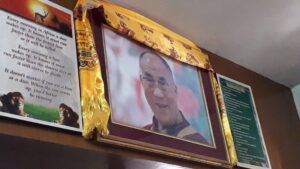Sowa Rigpa’s origins can be traced back into the 7th and 8th century to the reigns of the Tibetan kings Songtsen Gampo (617-650 AD) and Thrisong Detsen (718-785 AD). As part of their efforts to advance medical proficiency, physicians from India, Persia, and China, and later from Nepal, Kashmir, and Central Asia, were invited to Tibet to share their respective knowledge and presented medical texts that were then translated into Tibetan language. Thus, borrowing from diverse origins and sources, especially from Indian and Chinese medical teachings, and adapting that knowledge to the ecological environments of high plateau regions, Sowa Rigpa gained great complexity.
In contrast to Ayurveda’s or Chinese medicine’s spread throughout the world, which has been ongoing for several centuries, the practice of Tibetan medicine until recently has been mainly confined to certain regions in East, South, and Central Asia. Despite its long history as well as profound medical instructions, this medical tradition was barely heard of outside Tibetan cultural regions up to the second half of the 20th century. In the year of 1950, however, the invasion of the Tibetan Autonomous Region by the Republic of China began, culminating in the “Tibetan Uprising Day” on March 10, 1959, in Lhasa, which forced tens of thousands of Tibetans to leave the region. Migrating to South Asian countries like India and Nepal, or seeking refuge in Europe or the United States, the immigrants formed several exile communities. One such community is McLeod Ganj, a suburb of Dharamsala in India, which houses the headquarters of the Tibetan government in exile, the Central Tibetan Administration.

Picture of the 14th Dalai Lama, former political leader of the CTA and spiritual head of the Gelug School of Tibetan Buddhism, hanging above the medicine dispensary in a Sowa Rigpa clinic in Kathmandu, Nepal.
Following the annexation of the TAR, the diffusion of Tibetan refugees, their political cause, propagated by the charismatic personality of the 14th Dalai Lama, and the neat and steady creation of a homogenous, worthy-of-sympathy Tibetan exile identity, the refugees earned heightened interest in the West. In the 1960s, the first practitioners of Tibetan medicine, also called amchi, began to be invited to Western countries to present their medical traditions at academic conferences in Europe and North America. This led to an increase in academic publications and research on the subject.
During the last decades, Tibetan medicine has been subject to profound transformations due to a multitude of external impacts, such as a strengthening of market economies, the dispersion of biomedicine and the establishment of corresponding standards of medical practice, and the introduction of new concepts aimed at environmental protection. Facing new challenges and being aware of new possibilities, practitioners began to adapt and transform Sowa Rigpa, its various forms of practice, pharmaceuticals used, production processes, and range of practice while envisioning a global field of medical action.
